Want to be one of those mysterious people who scribble on their diaries? You’re at the right place! Yes, people will often assume you’re out of most people’s leagues. But if you’re obsessed with stationeries and lists, you’re totally going to enjoy bullet journaling!
Why Bullet Journal
Is it a to-do list? A planner? A sketchbook? A diary? What is a Bullet Journal? Well, it’s all of those things! Pretty darn useful! Right? Bullet journaling is a method of personal organization. It assembles the chaos in your schedule and systemizes it so you can be more productive; bye-bye procrastination! Except, it’s really going to be you doing all the work; opening a bullet journal doesn’t magically get elves to do your work for you.
to help you track the past, organize the present, and plan for the future
Ryder Carroll, Creator of the analog Bullet Journal, on the design of a Bullet Journal.
So, a bullet journal is a convertible, multi-purpose journal. You can even keep a bullet journal on your phone these days! You’ll get a better fix on the usefulness of the system as we elaborate bullet journaling how-tos.
Start bullet journaling
You need to know why you’re taking up bullet journaling in the first place; you don’t necessarily have to use every element of a bullet journal if most of your life is already on track! The idea is to achieve personal goals while being efficient; jot down short notes instead of writing long sentences. Give your Bullet Journal a complete chance when you finally do; you won’t exactly be efficient if you use several systems to get the same thing done.
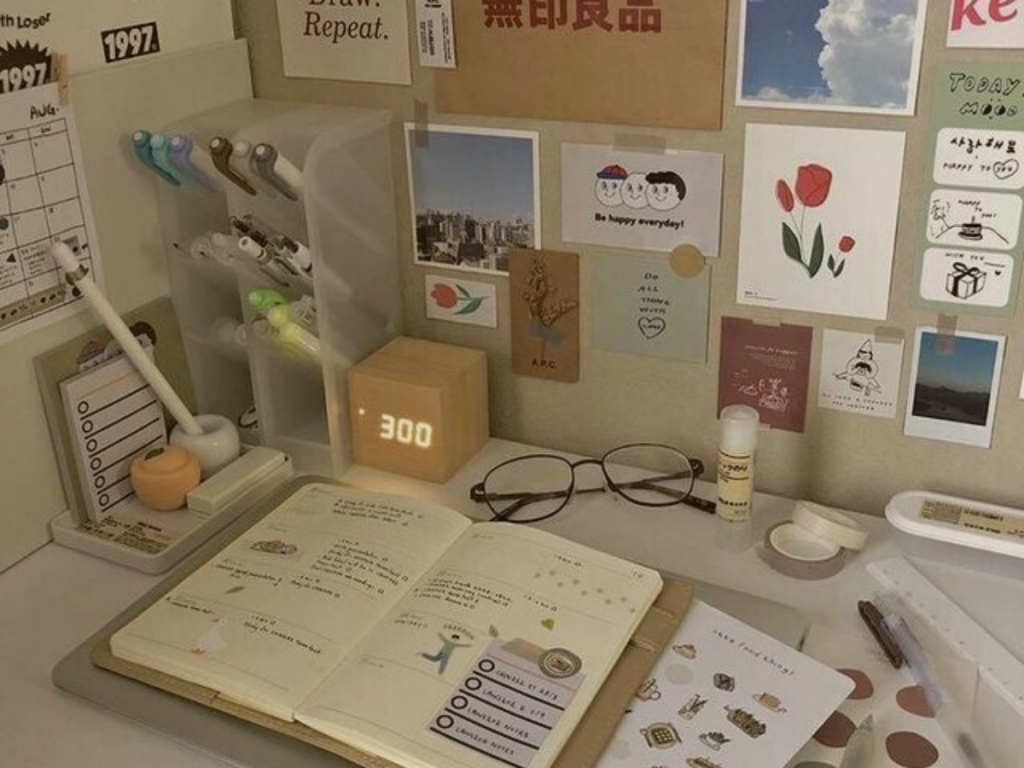
Apart from the right mindset, you really just need a pen and a notebook to start bullet journaling. You can get supplies from your neighbourhood stationery store once you’re able to picture what you want your journal to look like; artsy, minimalistic, you.
How to Bullet Journal
We’ll tell you how a basic Bullet Journal works, but it’s your journal at the end of the day so understand that you have all of the control here. Do whatever fits the bill!
Index
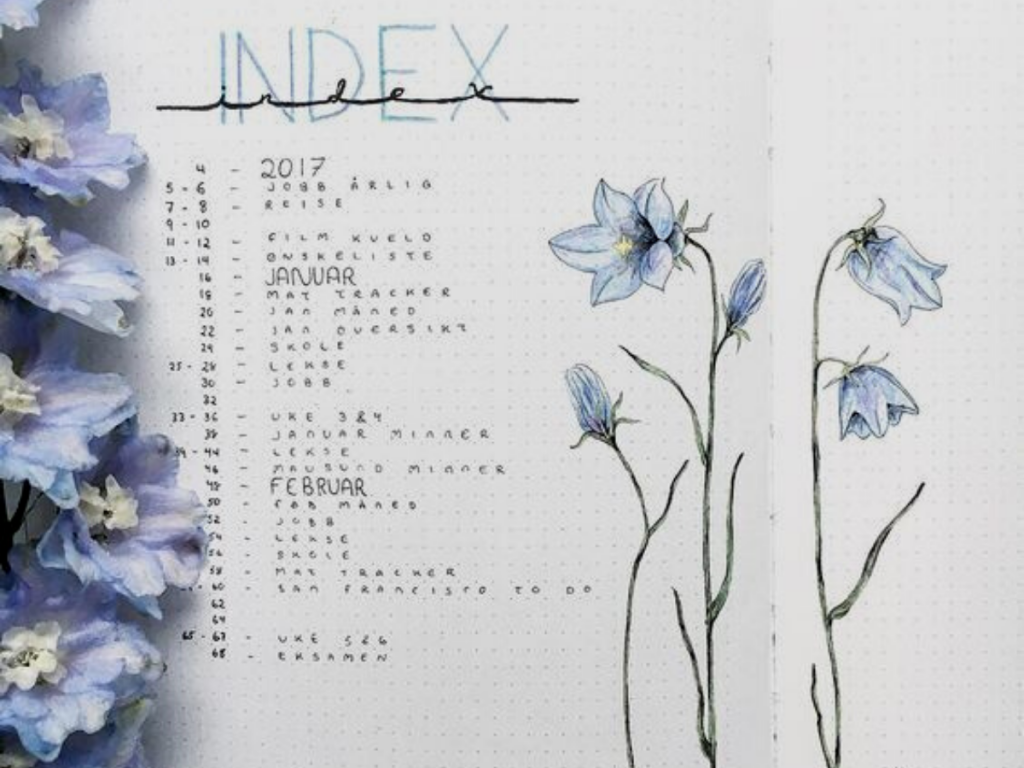
The Index is like the contents page of a book, which means, you’ll need to number your pages for the index to work. Add the names of your collections (of entries) and their page numbers so you can easily locate them later.
Rapid-logging
This is the language of bullet journaling; no, you can’t add that to your resume. It consists of bullets, structures, and signifiers. Bullets are short sentences appearing as symbols. They are typically divided into three main categories.
Tasks
A single ‘●’ symbolizes tasks. Tasks can be incomplete, complete, scheduled, migrated, or irrelevant. You can assign symbols for the state of these tasks, for example, strike through irrelevant tasks and cross out completed ones.
Events
A ‘○’ symbolizes events. These are date-related entries that might be prescheduled or logged after they’ve occurred. Similar to tasks, you can assign symbols for the state of events as well.
Notes
Notes are symbolized with a ‘–’. They range from meeting and lecture notes to random facts, ideas, and observations. The purpose of notes is to log information that you don’t want to forget.
Signifiers
It’s in the name! Signifiers represent the significance of bullets. Common signifiers are:
- ‘*’ – Priority
- ‘
 ’ – Explore
’ – Explore - ‘!’ – Inspiration
- ‘$’ – Spend money
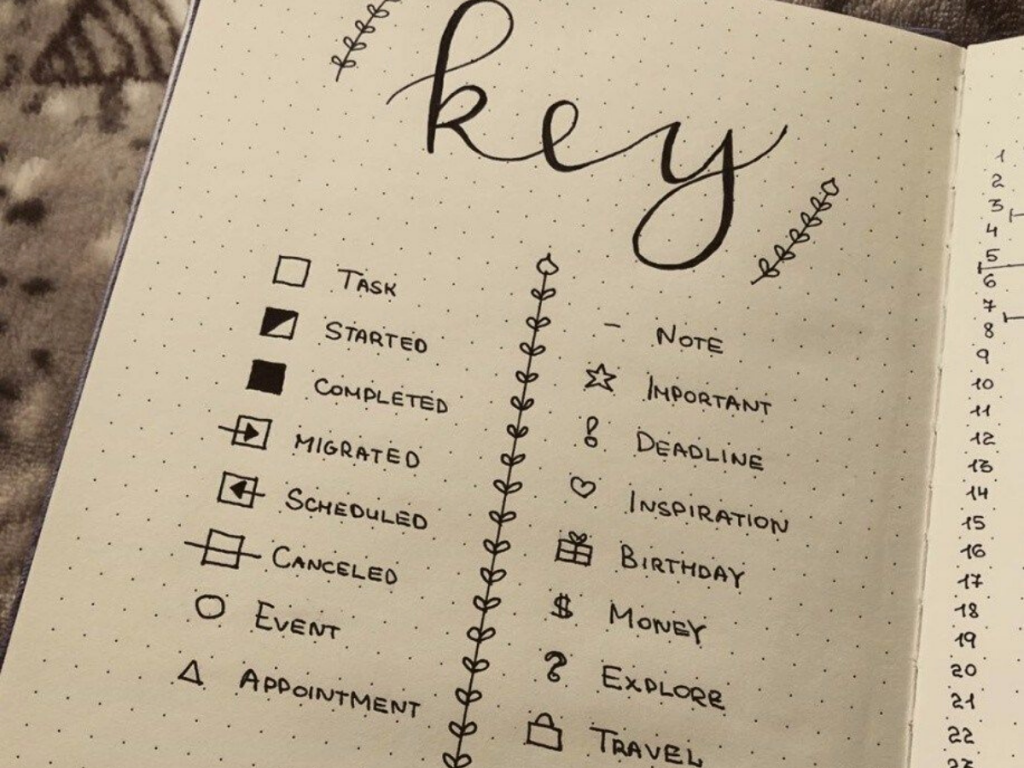
You really don’t need to stick to the rules, you have the freedom of choosing your own symbols; hearts, stars, clouds. To be honest, as you incorporate your journal more and more with your personal organization system, you pretty much have to come up with your own custom-built bullets and signifiers. Your journal won’t be as effective otherwise; your life is like no other’s! You can explain what each of the symbols means in an exclusive collection of symbols; your own language module!
Structures
You can mix and match your bullets to just get your thoughts of the day out of your head and collected on paper. You can also nest bullets under other bullets for ease of organizing. For example, you can add notes and subtasks under tasks and events. You can tie it all together in a Daily Log or under a fitting topic – a collection.
Migration
Here’s the (not really) bitter truth! You won’t always be able to stick to a schedule, do things as you planned. But that’s fine! You don’t have to get all your work done to be productive. What you have to do, is use your time at hand wisely. Migration allows you to move tasks in and out of the Future Log and Monthly Log. Things that don’t matter the most at the moment and can be delayed can be migrated to the Future Log and migrated back into your Monthly Log when a task becomes urgent or an event becomes current. You can migrate tasks and events by just turning your bullet into a ‘>’.
Collections
Every entry of a Bullet Journal is made under a broader topic. Each of these topics is a collection. Three core collections keep Bullet Journals functioning. These are the Future Log, the Monthly Log, and the Daily Log. But again, it’s your journal and you can customize and create collections that work best for you.
The Future Log
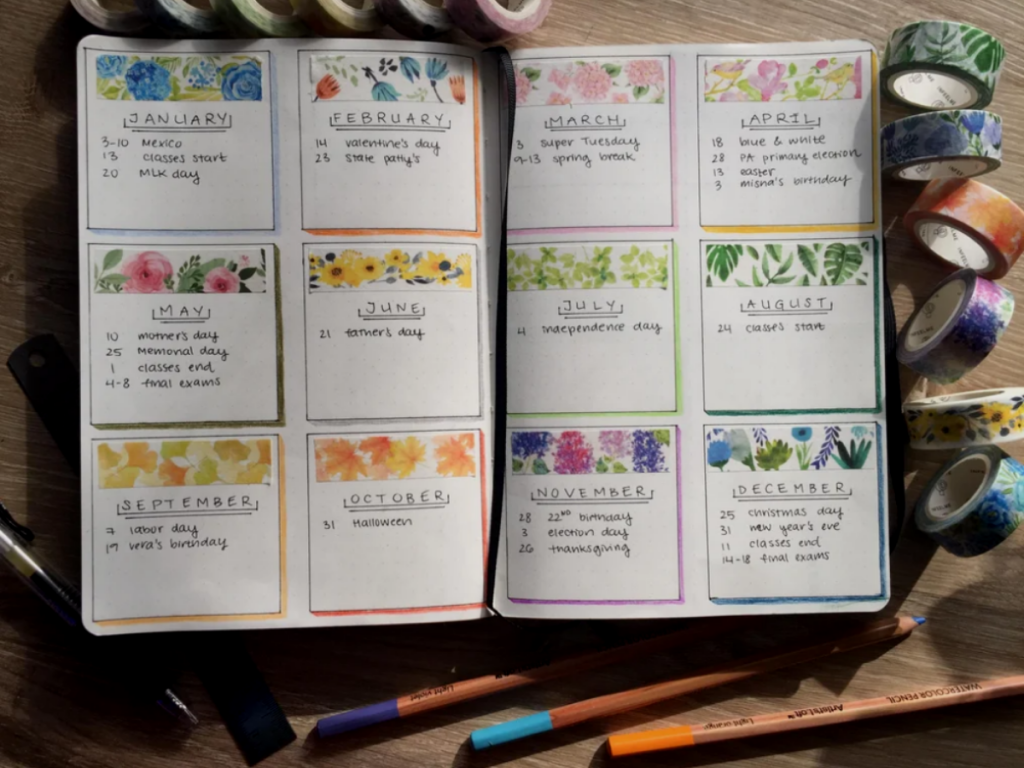
This collection gives you a glimpse of the future that you’re working for and is approaching you. It outlines entries on a monthly basis, date spotting tasks and events; do keep a blank page for tasks and events that you don’t have a specific date in mind for. A Future Log gives you somewhat an idea of what your year, or half a year, looks like. Review your Future Log to check if you can migrate any tasks or events to your Monthly Log.
The Monthly Log

This Monthly Log has two pages, the Calendar Page and the Tasks Page. The Calendar Page lets you make short entries for every day of the month. You can use it, well, like a calendar, to schedule events and tasks. However, you don’t need to add all the bullets beforehand; it’s okay to make entries as you go or after you’ve completed a task or an event has happened. The Tasks Page consists of a list of things you want to get done within the current month but don’t have a scheduled date for and tasks that have migrated from previous months. Also, you can use signifiers for your Monthly Log entries.
The Daily Log
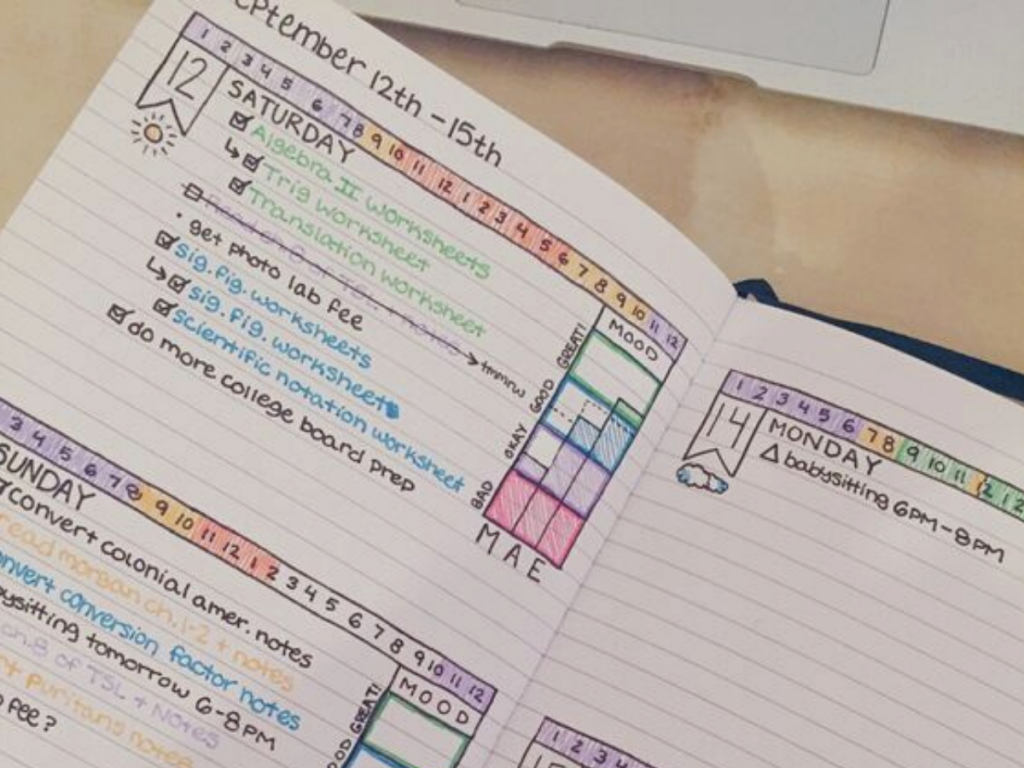
The Daily Log is used on a day-to-day basis. The date is the topic of your collection and your collection page is a Rapid-log of events, tasks, and notes of the day. But don’t worry, it’s okay to skip a day or two here and there; you can keep a Weekly Log if a Daily Log seems like it’s too much for you. Unlike the Future Log and Monthly Log, you can’t set up the Daily Log too much ahead of time and you’ll almost definitely have to update it.
Custom Collections
Custom Collections make a Bullet Journal self-evidently yours. A Bullet Journal is supposed to be whatever you need it to be. It can be a diary, a gratitude log, a progress tracker, a sketchbook, or even a food log. Similarly, you can have a collection of doodles, books to read, reviews, recipes, expenses, pictures, songs, short stories, mindmaps, self-care, brainstorming notes, goal plans, and just about anything in your journal.
Your BuJo doesn’t have to look great. It has to be authentic and it has to work. But if you want to, you can GO ALL OUT!
Subscribe to our Newsletter


























Leave a Reply